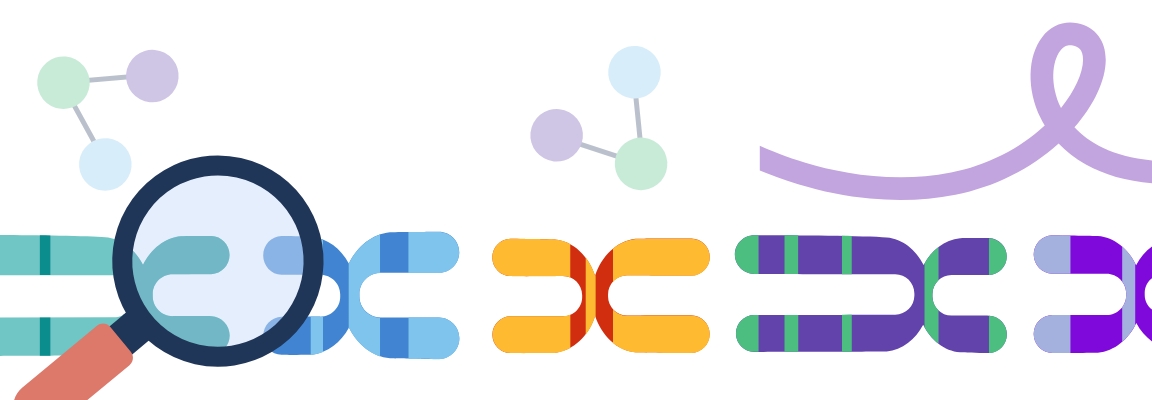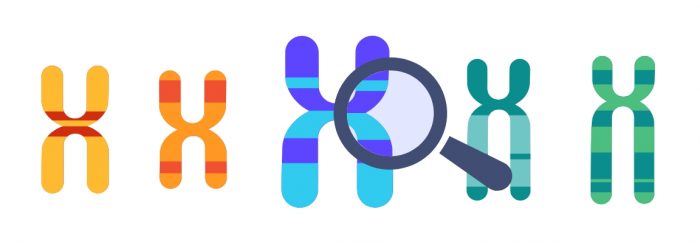Cancer is a genetic disease, as it occurs due to changes in the activity of genes, usually involved in survival, growth, replication, and cell cycles. Even though it is a genetic pathology, environmental factors also influence it, affecting the appearance and types of mutations within cells.
Because cancer never occurs due to a single mutation. Dozens, even hundreds of them, are needed in a cell to turn it from an efficient worker into a lethal danger. These mutations can be classified into three types:
- Randomly occurring due to normal cellular activity, such as cell division.
- Due to the existence of external situations and compounds that modify the cell’s DNA, such as carcinogens.
- Mutations inherited from parents.
It is estimated that between 5 and 10% of cancers have a hereditary nature, although not all genes increase the risk in the same way. Because it’s not the cancer itself that can be inherited, but the genetic predisposition or susceptibility to suffer from a specific type of cancer. Cancer cannot be inherited, but the mutations that increase the risk of developing it can be.
Hereditary cancer indicates mutations in specific genes that occur in germ cells, which are the ones transmitted from parents to children. These genes are present from the origin of the new organism, in all its cells, posing an additional risk for developing the pathology. Every year that passes, we discover new genes related to cancers and their effects on them.

Mutation is Not Synonymous with Tumor
Furthermore, not all mutations are cancerous. In fact, most mutations are neutral, either because they have no effect or because the body can adapt to them without causing harm.
When there is a gene causing the pathology within a family, it leaves a series of clues in its wake. These clues are found in the types of cancer, the familial relationship between them, and the age of diagnosis. If your entire family has had cancer, but they have been different types and diagnosed at age 90, there is no need to panic.
Similarly, you can be alarmed if your family has a history where a particular type of cancer is recurrent, has an early onset, is on a specific side of the family, or a mutation has directly been found in a relative.
Usually, mutations that increase the occurrence of cancers occur in genes:
- Tumor-suppressor genes. It makes sense that mutations in genes whose function is, precisely, to protect the cell from becoming tumoral, increase the risk of cancer in the individual.
- Oncogenes. We have proto-oncogenes, genes that are usually regulatory with quiet and necessary activity for the organism. What makes them special is that mutations in them turn them into oncogenes, abnormal forms with the capacity to make the cell malignant. Oncogenes are the altered and dangerous forms of proto-oncogenes. Because of this, oncogenes are not heritable (the proto-oncogene is always transmitted), except for the RET gene.
- DNA repair genes. If the DNA repair systems fail, the appearance of mutations within the cell, and the risk that they may lead to cancer, increase. Many of these genes can also be classified as tumor suppressors, such as BRCA1 and BRAC2, or TP53.
Each Gene with Its Cancer
Speaking of the BRCA1 and BRCA2 genes, we can talk about the sadly famous breast cancer. If you have affected relatives in different generations, it is important to perform early detection tests because there is a possibility that you have these mutated genes, and you are living with the sword of Damocles hanging over you.
Another gene involved in familial cancers is APC. This gene serves as a tumor suppressor in the WNT pathways. When the APC gene has an abnormal function, it usually leads to familial adenomatous polyposis and colorectal cancer.
In fact, colorectal cancer can also be caused by an inherited genetic condition called Lynch Syndrome or hereditary nonpolyposis colorectal cancer (HNPCC). It’s easier to call it Lynch Syndrome for convenience. It is estimated that Lynch Syndrome accounts for between 2 and 7% of all diagnosed colon and rectal cancers, and also causes them to appear at younger ages. Considering that colon cancer is the third most common form of cancer, we can understand its relevance.
Surprise additional fact: these hereditary genes not only increase cancer predisposition in the individual, but they also tend to develop cancer years before conventional patients.
Other genes prefer to play on all fields. The KRAS gene produces a protein that serves as an indicator to the cell for its growth and multiplication. When the gene is mutated, the protein remains active most of the time, causing uncontrolled cell multiplication. The KRAS G12D variant is found in 4.20% of all recorded cancers, especially in those that are adenocarcinomas.
Li-Fraumeni Syndrome occurs due to mutations in the TP53 gene. Yes, that well-known gene for being a tumor suppressor. It causes a high risk of developing tumors throughout the patient’s life, from an early age.
Of course, not all come with the birth package. An ancestor had to develop the original mutation in their germ cells, either by chance or because they liked to smoke cigarettes two at a time. Then, with the mutation already present, they would have offspring that would receive that alteration. From that moment on, that mutation increasing the likelihood of developing X cancers would go down the family tree among the descendants.
The key to these cancers is prevention. The first step is to perform genetic tests to confirm the existence of these mutations acting as risk factors. Then you must interpret them, take them into account, live a lifestyle according to the risk, and perform periodic tests to prevent the appearance of tumor cells.
In conclusion, hereditary cancer is an increasingly common fact in many families. Despite this, we have more advanced and precise technologies that allow us to genetically analyze cancers. If we know our genetic predisposition, we can influence the interaction with the environment to prevent, as much as possible, the appearance of hereditary cancer. It’s better to be watching through the peephole before they knock on the door.



